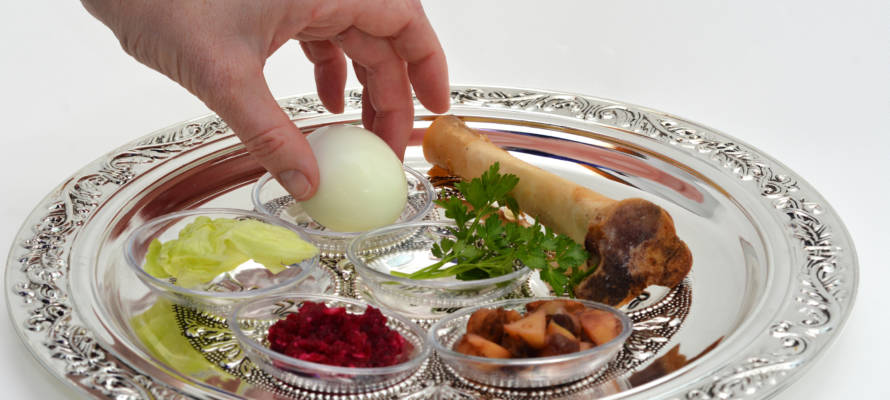Why is the egg one of the symbolic foods displayed at a Passover Seder?
By: Rabbi Ari Enkin, United with Israel
The Seder plate has a number of symbolic foods. The presence of most of the symbolic foods on the Seder plate is actually obvious. We eat bitter herbs as part of the Seder, for example, to remind ourselves of the bitter life of slavery that the Jewish people were forced to endure. So that’s an obvious one.
As a result, probably the most frequently asked question I receive about the Seder plate is why an egg is one of the symbolic foods on the Seder plate.
The egg represents the lesser-known “Festival Offering” that was offered on holidays. A person was generally required to travel to Jerusalem on each of the three Biblical festivals: Passover, Shavuot, Sukkot. When doing so, the pilgrim was required to offer a special “Festival offering” known in Hebrew as the “Korban Chagiga.” Hence, on Passover, in addition the “Passover offering,” known in Hebrew as the “Korban Pesach,” which everyone is familiar with as it is was historically the central feature of the ancient Passover Seder, there was also the additional Festival offering.
The Passover offering is represented by a shank bone on the Seder plate. This too, is one of the more obvious symbolic foods of the Seder plate, as a shank bone is, of course, from an animal so it makes good sense to use it to symbolize the Korban Pesach.
But why an egg for the Festival Offering?
One of the answers given is that since an animal bone is already “taken” to represent the Korban Pesach, something else must be found to represent the Korban Chagiga. Since an egg also comes from an animal, and is easy to cook, it was chosen to serve as the symbol of the Korban Chagiga.
Another answer given is that the Aramaic word for egg is “beya” which also means “to pray.” According to this approach, the egg represents “our prayer” that the Temple in Jerusalem be rebuilt so we can once again perform both the Korban Pesach and the Korban Chagiga. It is worth noting that the Passover Seder actually opens in Aramaic, the ancient language of the Jews of the Middle East, with the famous declaration: “Let all who are hungry come and eat with us!”
A final reason for the egg is because an egg is known as the food of mourners. This is because an egg is round, representing the cycle of life. In this instance, the egg represents the fact that we are all mourners over the destruction of the Holy Temple and the sad fact that we are unable to bring sacrifices nowadays. Indeed, the Ninth of Av, the day on which we fast and mourn the destruction of the Temple, always coincides on the same day of the week as the first day of Passover.

